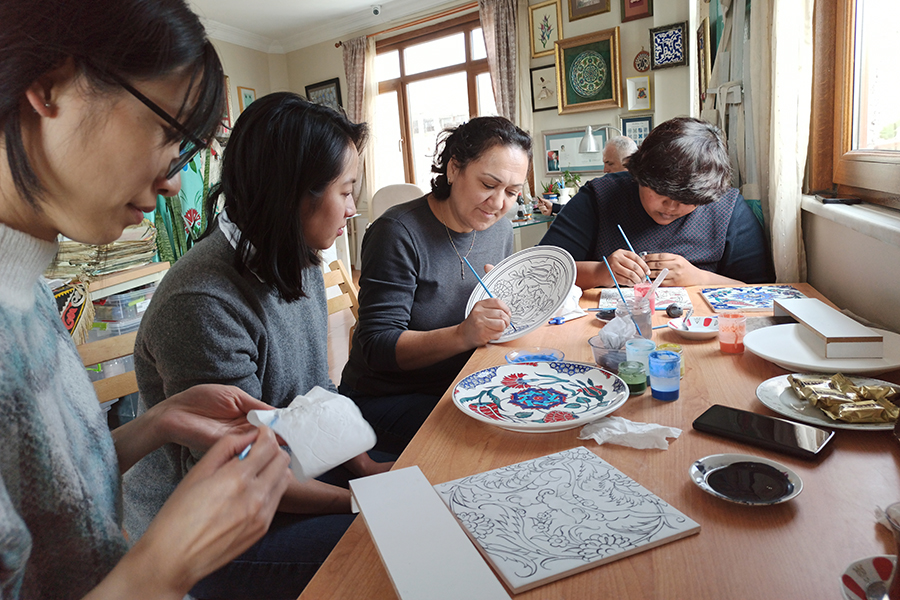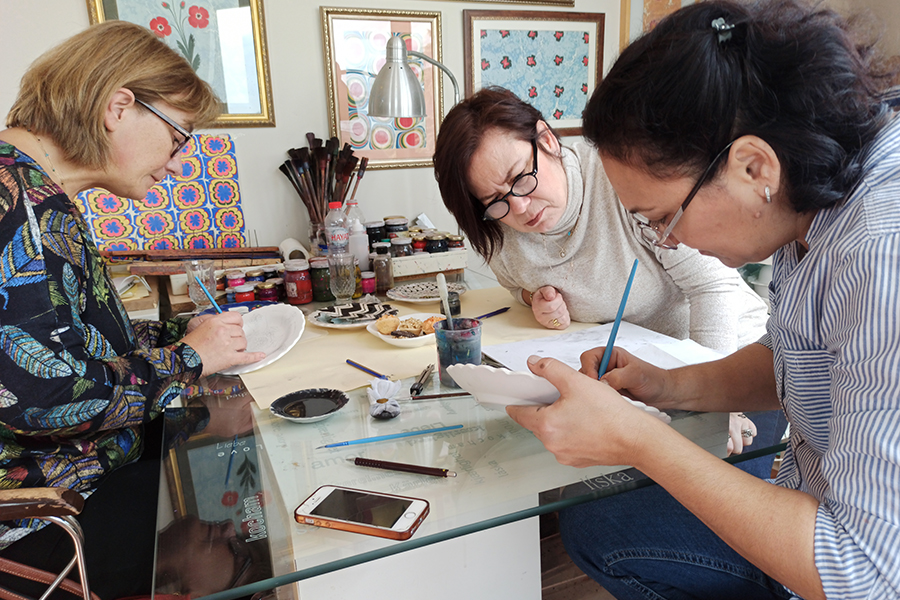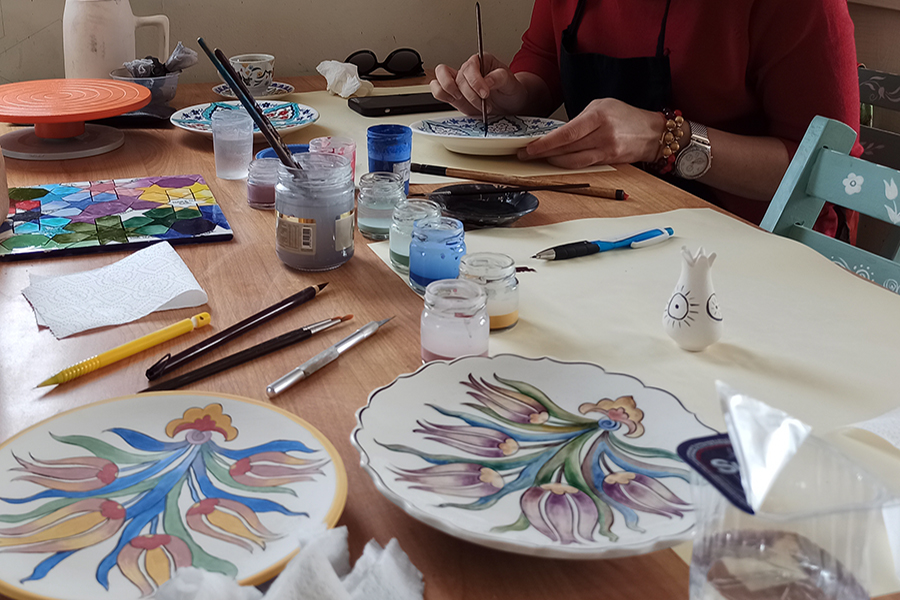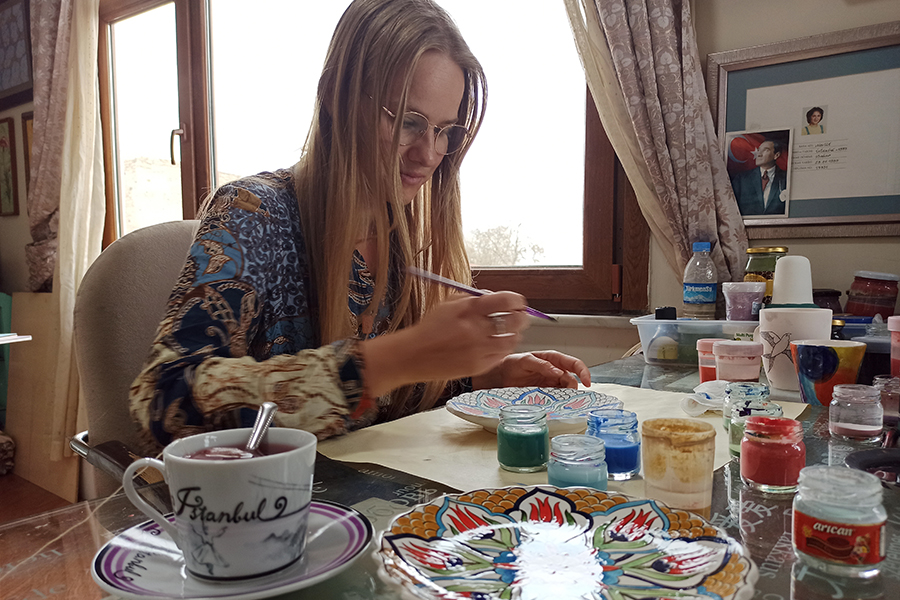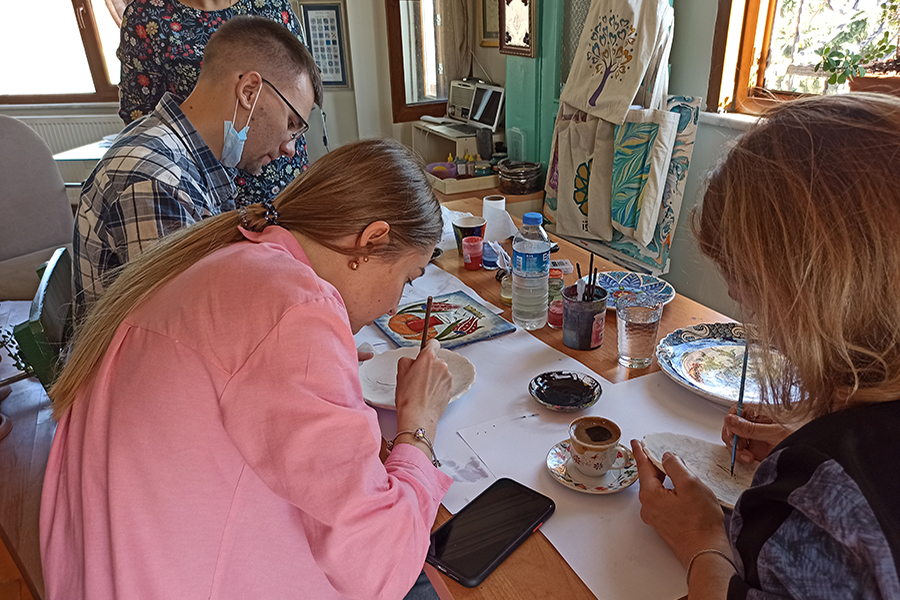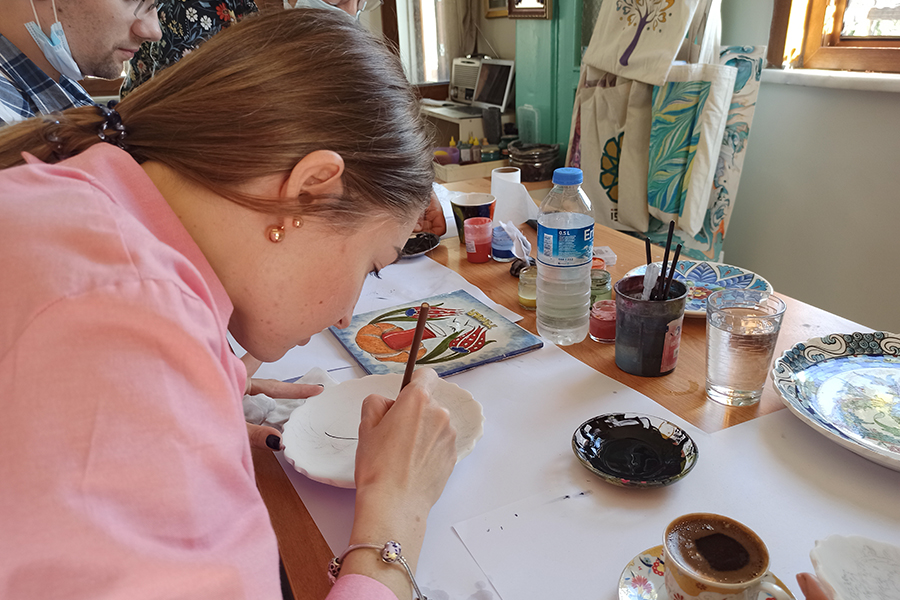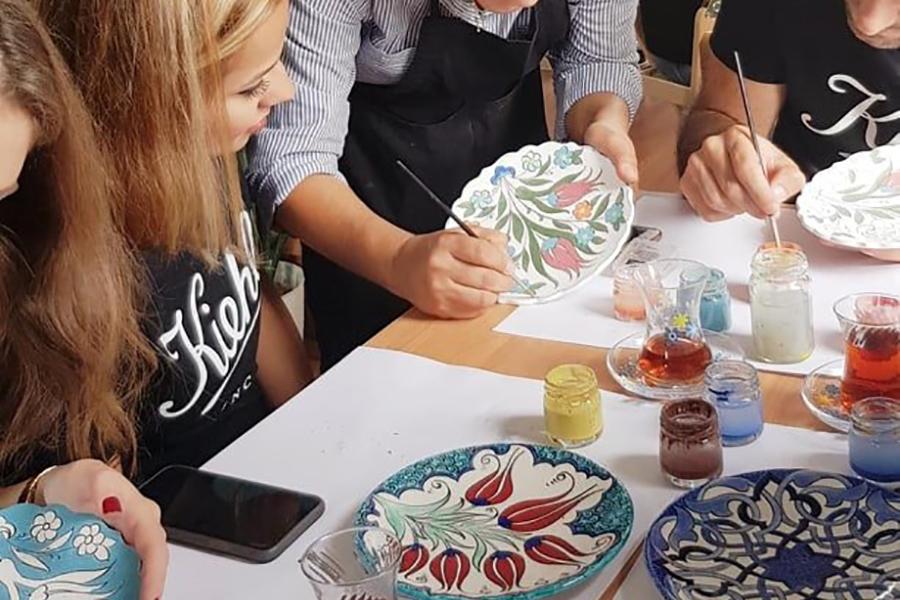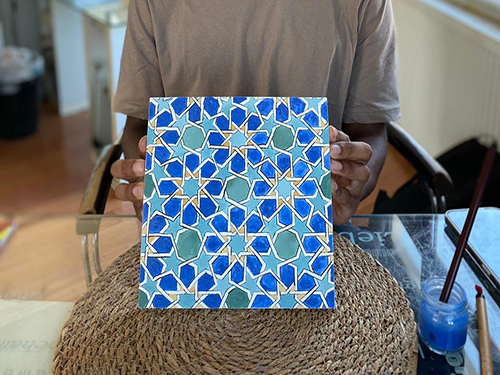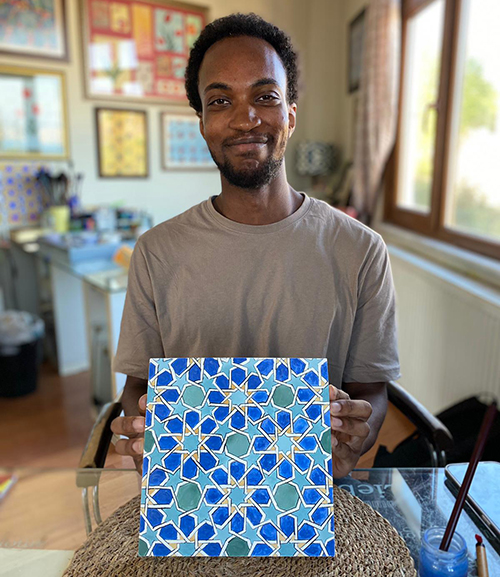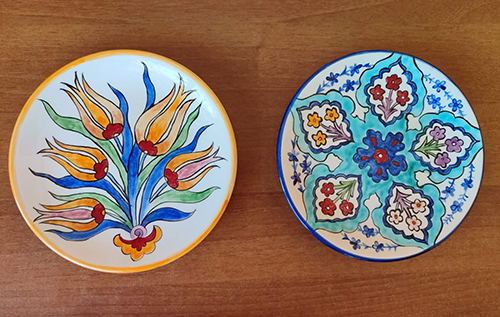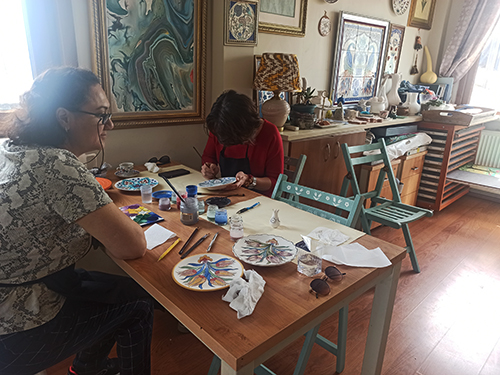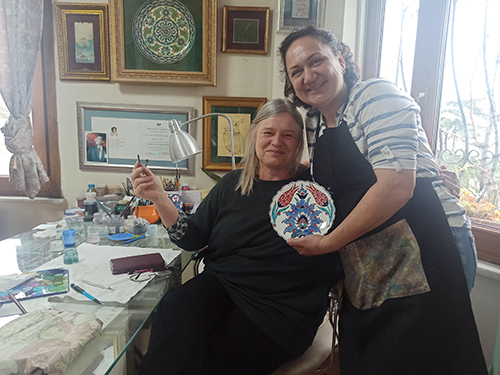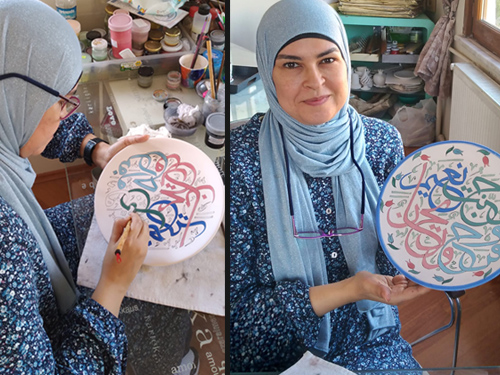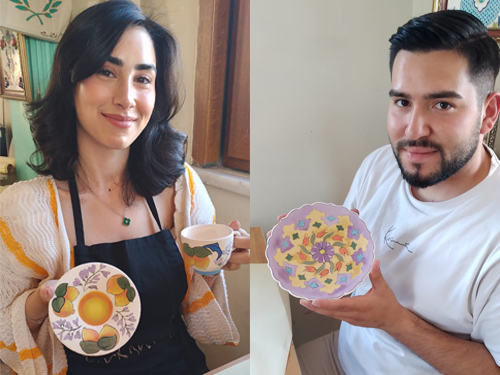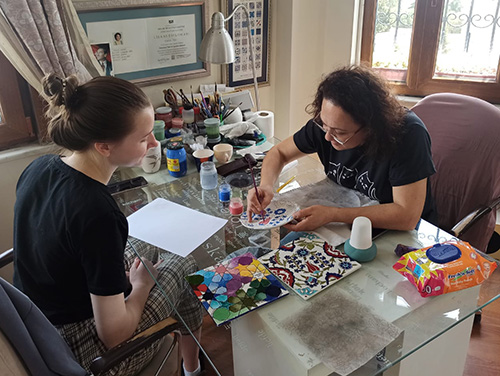
Drawing and painting lessons on tiles in Sultanahmet, Istanbul.
Turkish Tile: A portion of Islamic art history is represented by Turkish tile painting.
A significant portion of Islamic art history is devoted to Turkish pottery and tiles. Its origins date back to the Uighurs of the eighth and ninth centuries. Iranian Seljuk art in particular, as well as Ghaznavid and Karakhanid art, had an impact on its later evolution.
Following the Seljuks’ triumph over the Byzantines at Malazgirt in 1071, art moved with them to Anatolia and began a new era of vigorous development supported by the Seljuk sultanate of Anatolia.
There is a common, but completely false, misconception that Islamic art does not use figurative painting because the Koran forbids it. Only in the ninth century were religious decrees made that forbade the depiction of any living thing with movement; nevertheless, they were not strictly implemented until the sixteenth century. The Seljuk period’s tiles, stone, and stucco reliefs, which adorn both secular and sacred relief monuments, are particularly rich in figural art. Nobles and servants, hunters and hunting animals, trees, birds, dragons, sphinxes, lions, sirens, and double-headed eagles were among the subjects.
Everyday 3 Hours Turkish Tile Painting Lessons in Sultanahmet / Istanbul.
** Our teachers are local Turkish Artisans and have experience in teaching.
** Morning and Afternoon Tile Painting sessions
** You can choose Plate, Square tile or Figure
** We fire our Kiln once a week.. If you have time, we will fire your tiles and give you the ready product
Booking
Information
Photo Gallery
Turkish Tile Ceramic Art Workshops – Masterclass – Sultanahmet
Duration: 2 Hours. available in English, French, Japanese, Russian, Turkish
Location: Sultanahmet / ISTANBUL
Price : 65 Euro
For Online Reservation: Click Here
Reservation Office – Old IstanbulCOM
Cankurtaran Mah. Ishakpasa Cad. No: Sultanahmet 34400
( Senguler Tourism )
Istanbul, Turkey
How can one participate?
You can make reservations from here ( online ), you can e-mail us or you can visit our culture center in advanced and make your reservation in person.
All equipment for needed for the tile workshop
In the end of the workshop you will have a finished piece of art work.
If you have enough time we will fire your tiles in our kiln.
Workshop Area, Aprons & Gloves
Turkish Tea & Water
Photo Gallery
